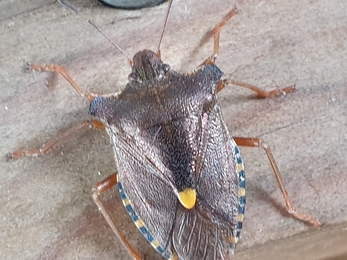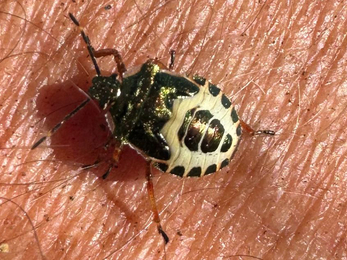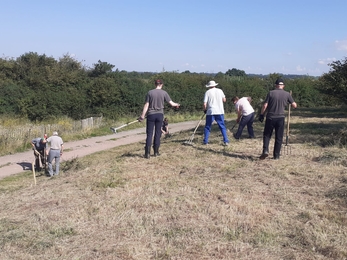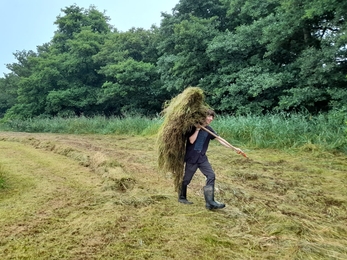Wild news from our reserves – 25 August 2023
Our brilliant volunteer team at Trimley Marshes were also busy cutting an area of species-rich grassland.
Our wardens are lucky enough to get close to some beautiful bugs whilst managing the reserves. This week’s rewards were a square shouldered forest bug (a type of shield bug) and a shimmery bronze shield bug nymph.
Great green bush cricket
At nearly 7 cm long (including the female's long ovipositor), the great green bush-cricket certainly lives up to its name! This male was spotted at Trimley Marshes recently and is the second one recorded on the reserve. Living in trees and scrub, great green bush crickets feed on vegetation and other insects. The females lay their eggs using their very long, down-curved ovipositors. The males display to females by rubbing their forewings together producing a very loud, long 'song'; which sounds like a sewing machine going continuously for lengthy periods, but their expert camouflage still makes them hard spot.
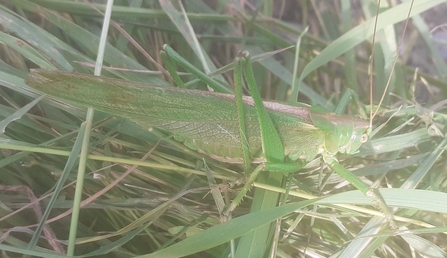
Great green bush cricket at Trimley Marshes – Joe Underwood
Wasp spider on the move
Warden Joe Underwood filmed this large female wasp spider making a dash for it to cross the track at Trimley Marshes.
White point moth
The white point moth has a distinctive white dot on each wing, like this one seen at Darsham Marshes recently. Common in Europe, this species has migrated to breed in the UK and is becoming more frequently seen.
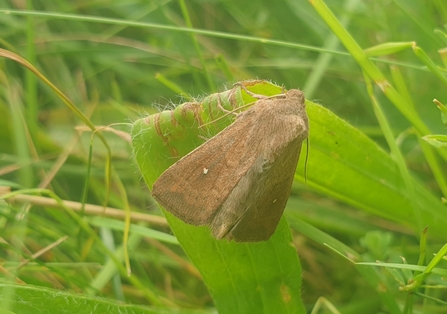
White point moth at Darsham Marshes – Dan Doughty
Gorse spider mites
Volunteer warden Roy Richardson spotted this silky gorse spider mite web at Lound Lakes. Gorse spider mites are native to Europe and create these large colonies on gorse, which along with their feeding, can damage the plant.
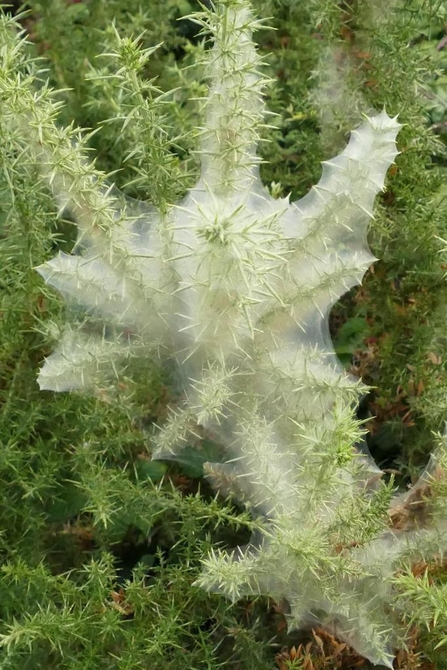
Gorse spider mite web at Lound - Roy Richardson
Dog ambassadors
Lound Lakes warden Andy Hickinbotham gave a guided walk for Happy Paws Dog Training Society recently, a chance to reiterate the importance of dogs being kept on leads when they are allowed on nature reserves. Find out more here https://www.suffolkwildlifetrust.org/dogs-nature-reserves .

Warden Andy Hickinbotham gave a guided walk of Lound Lakes for Happy Paws Dog Training Society
Preparing for orchids
Our wonderful volunteers at Carlton Marshes have been raking and clearing the cut fen at Sprat’s Water. Removing the thatch gives the orchids and other fen specialists the best possible habitat and chance to flower next spring.
Our brilliant volunteer team at Trimley Marshes were also busy cutting an area of species-rich grassland. The cut area contains populations of both bee and pyramidal orchids, and so benefits from an annual cut.
Cattle proofing
The northeast reserves team have been busy fixing a stretch of fencing at Castle Marshes - ensuring that the area is cattle proof for the start of conservation grazing.
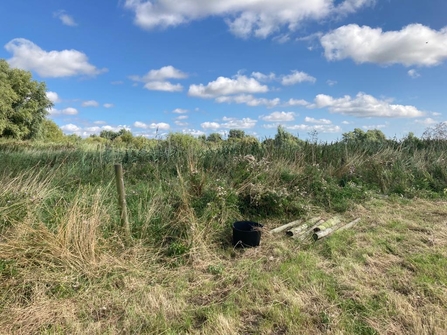
Fixing a stretch of fencing at Castle Marshes – Frances Lear
Tree safety
Lound Lakes warden Andy Hickinbotham acted promptly when a tree fell across the path recently – the dangerous limbs were cut and cleared from the trail, and safe access resumed.
Benefit of the job
Warden Lewis Yates has been busy path cutting at Oulton Marshes this week. The slightly less exciting task was rewarded with the sight of dozens of swallows feeding up for their journey south and kingfishers on the River Waveney.
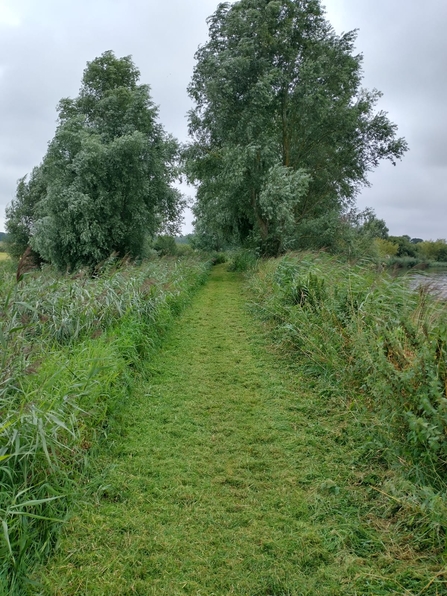
Path cutting – Lewis Yates


